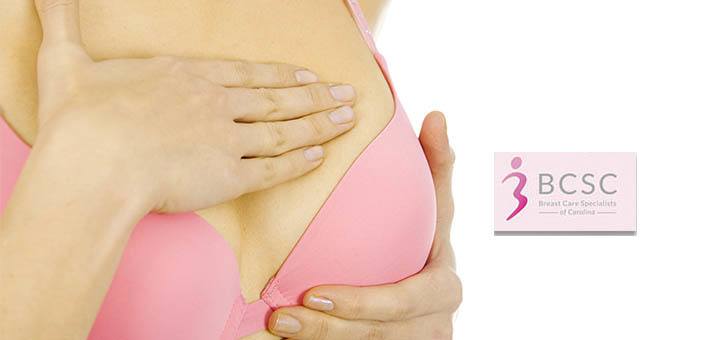
DO I HAVE HEALTHY BREASTS?
So, what is a “normal” breast? What should they feel, look, and act like? This month, Dr. Thomas Williams is sharing some wisdom to help you decide if what you discover about your breasts is typical and healthy. She’s also sharing what changes should alert you to possible issues in your breast health.
WHAT DOES NORMAL FEEL LIKE?
Dense tissue is firm, and often lumpy and bumpy. People with dense breasts sometimes have a harder time finding abnormal lumps and bumps because much of the breast tissue is textured. Young women with dense breasts, in particular, may struggle to make sense of what’s a normal lump and what isn’t. Fatty breast tissue is much smoother and less textured than dense. Finding abnormalities in fatty tissue is much easier; it’s almost like finding a pea in a bowl of Jell-O.
Performing monthly breast self-exams (and reminding your female family and friends to do the same!) is essential to developing your personal baseline. If your breasts feel the same from one month to another, and all of your lumps are in the same places and haven’t changed in size, then everything is likely normal. Developing a baseline gives you something to compare against so that you notice changes if and when they occur.
YOUR “NORMAL” CAN CHANGE
Many women experience breast tenderness at certain points in their cycle. If you’re one of them, then plan your monthly self-exam for a time when your breasts are no longer tender. As long as you do your check at the exact same time each month, you should be able to familiarize yourself with what’s typical for your breasts. If your exams are scattered throughout the month, you may end up confusing yourself.
Other causes for changes in your breasts include losing or gaining weight and aging. However, changes in the dense and fatty composition of your breasts won’t be confusing if you track the slow changes over time.
HOW DOES A HEALTHY BREAST LOOK?
If your nipple is retracted or pulling into your breast rather than sticking out, it could be an issue. Some women have inverted nipples at their baseline, so if your nipples have always pulled in, then it isn’t an issue. However, if they normally stick out but have suddenly pulled in, you should see your physician right away. A sudden nipple inversion could mean that there is a mass or lump inside the breast that is causing the nipple to pull in.
HOW DOES A HEALTHY BREAST BEHAVE?
Healthy breasts should not have spontaneous discharge. Discharge that is unrelated to breastfeeding or anything you’ve done (such as pressing on or squeezing the nipple), it warrants a check from your physician. Healthy breasts can have nipples discharge if you press on them, but spontaneous discharge, especially if it’s bloody, is a reason to see your physician without delay.
HOW MUCH PAIN IS NORMAL?
Most breast cancers or problems in the breast are not painful. If you do have persistent pain in one spot, it could be an abscess (pus pocket in the breast) or mastitis (a breast infection in part or much of the breast). Both conditions can be very painful, but a breast specialist can diagnose and treat the abscess or infection.
SELF-EXAMS HELP YOU DISCOVER YOUR “NORMAL”
What’s “normal” is different for every single woman. If you have questions about what’s healthy for you, you discover a change, or you’re not sure if something is normal, schedule a screening appointment at Breast Care Specialists of Carolina. Dr. Thomas can help you figure out what’s healthy and normal for you so that you can develop your personal baseline.
Phone: 704-769-3800 | Fax: 949.404.8311
